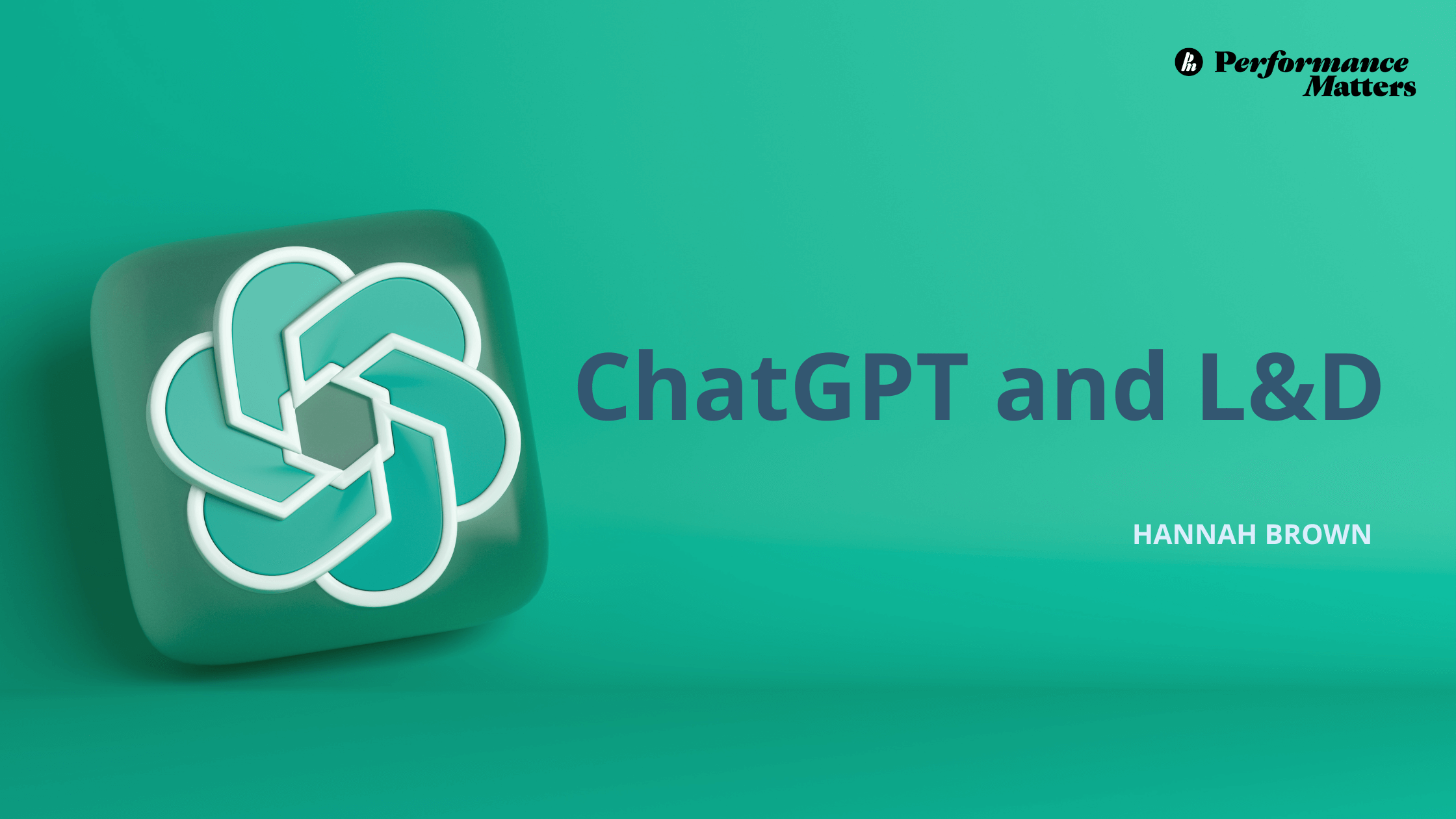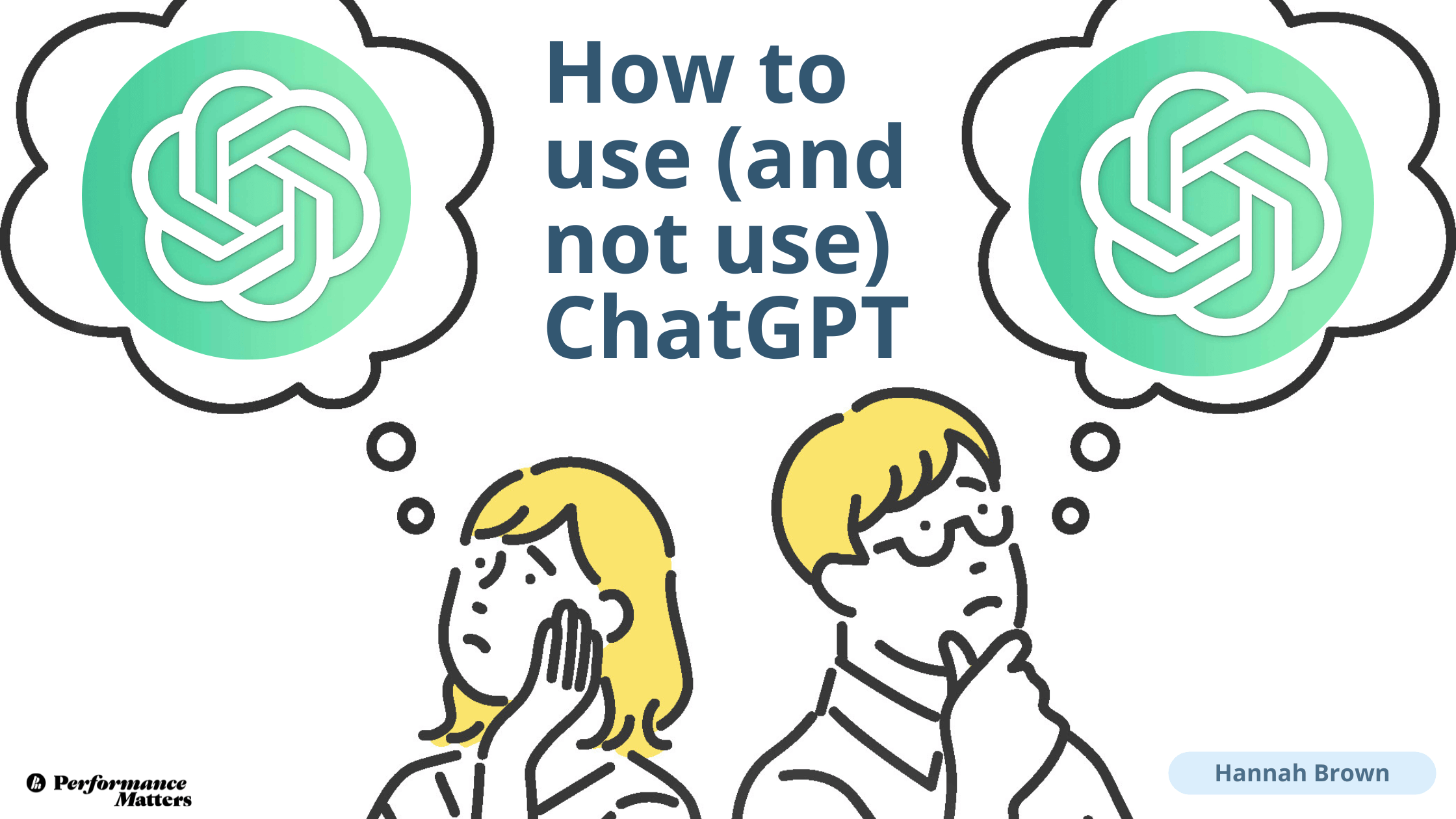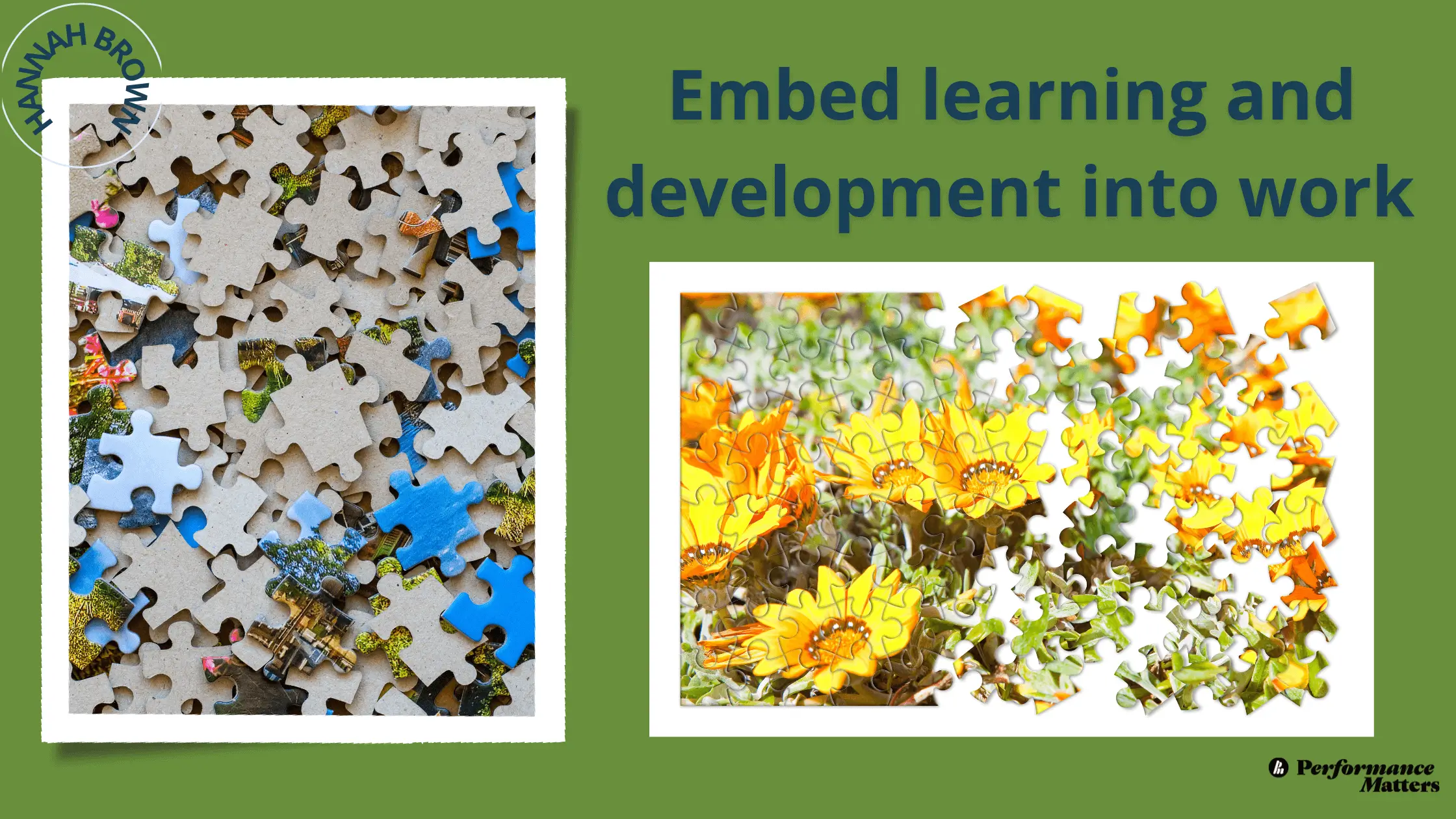Introduced in November 2022, ChatGPT has exploded and is cropping up online on social media feeds, daytime news, and newspapers. If this is new to you, ChatGPT is an Artificial Intelligence (AI) model that engages in human-like conversations. Go here for a ChatGPT tutorial.
Included in the flurry of posts and commentary are legitimate concerns about AI in general and how ChatGPT might be used negatively. Teachers are worried students will ask it to generate full essays. Musicians, poets and programmers are worried it will replace their jobs. I agree there are many cautions and reasons to explore using it with a critical eye. There are also tremendous opportunities. I believe ChatGPT will quickly become a permanent fixture in how we work, learn and go about our daily lives.
How can ChatGPT support instructional design?
I want to focus on the opportunity for ChatGPT to support (and not replace) the important work Learning and Professionals do. I’ll use creating an introductory management course as my example and will use ChatGPT to support me in each stage of the ADDIE process.
Go here for background on ADDIE.
Analysis
One of the main tasks in the Analysis stage is defining the need or the problem that training can address. For my new manager course scenario, I asked ChatGPT, What are the five biggest challenges for new managers? This is the response.
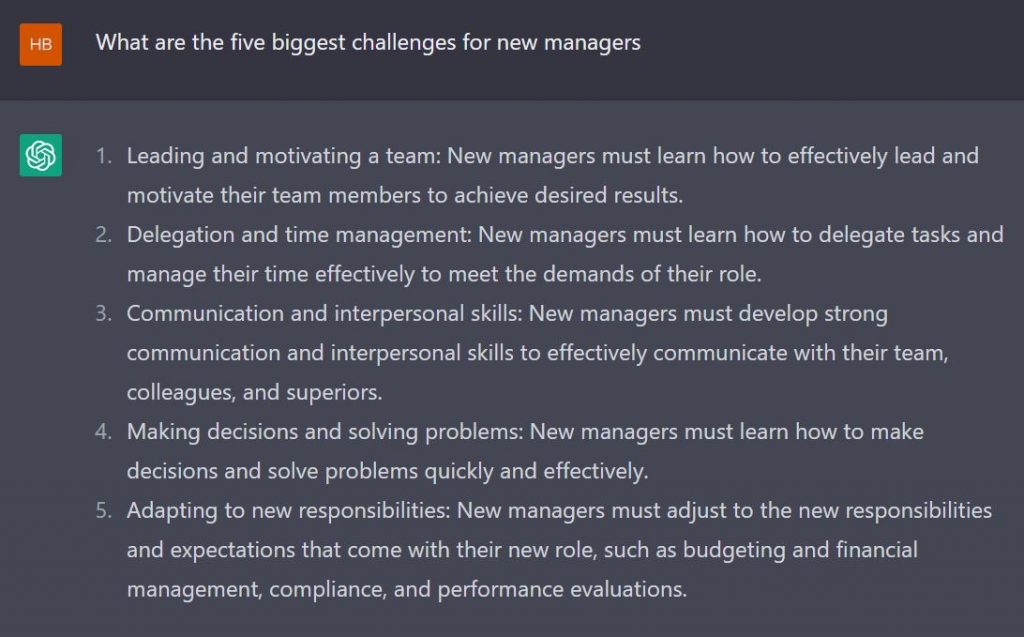
I could use this as a starting point and add or change items based on my conversations with my client about the performance need. I could also use these challenges to create questions to ask in interviews or focus groups for a more in-depth analysis.
Design
In the Design stage, you identify and sequence the topics and create learning objectives. First I asked ChatGPT to identify course topics. The initial list included fourteen topics and was too long. I asked the application to identify the most important.
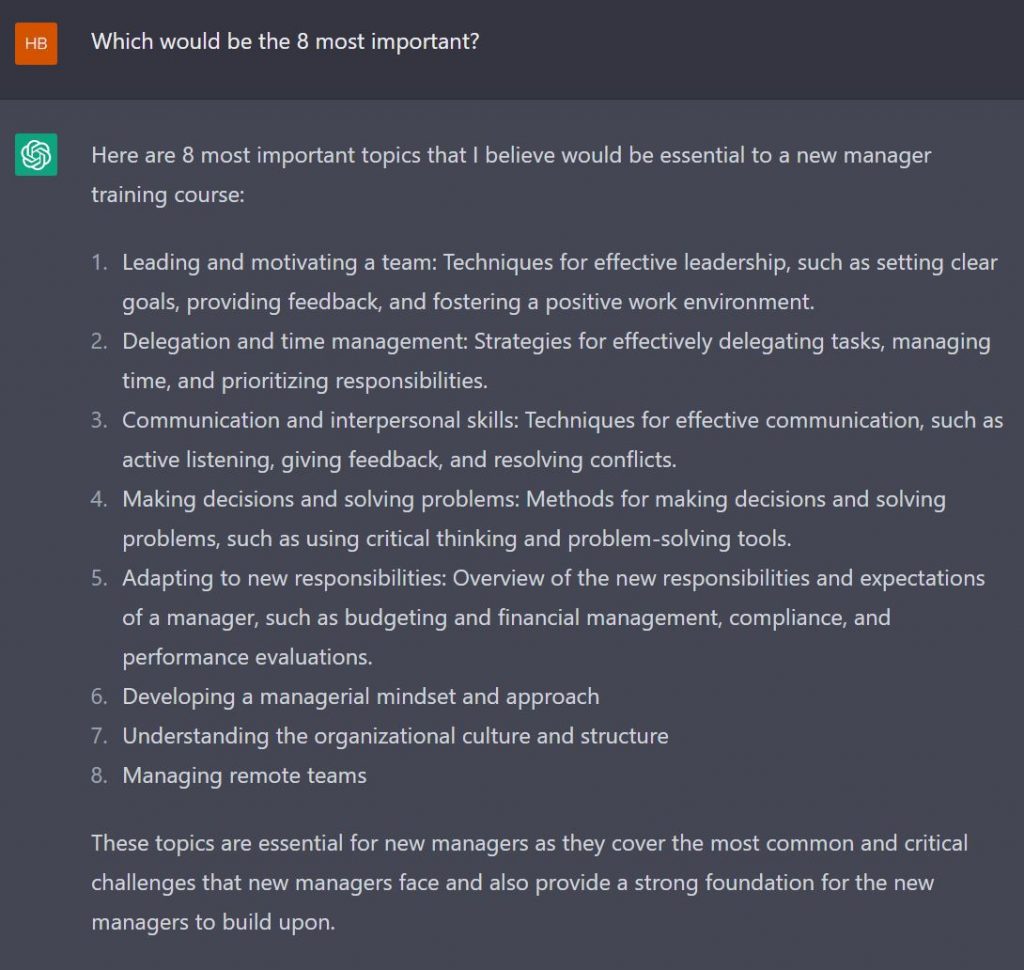
I could use the original or refined list to plan my course. I would also change the topics according to the needs I identified with my client. I asked ChatGPT to sequence the refined list. I could also use ChatGPT’s response to think creatively about how I would want to sequence my topics.
Finally, I asked the application to write learning objectives for each topic. Properly written learning objectives are very important to me, so I was a bit nervous about what the application would produce.
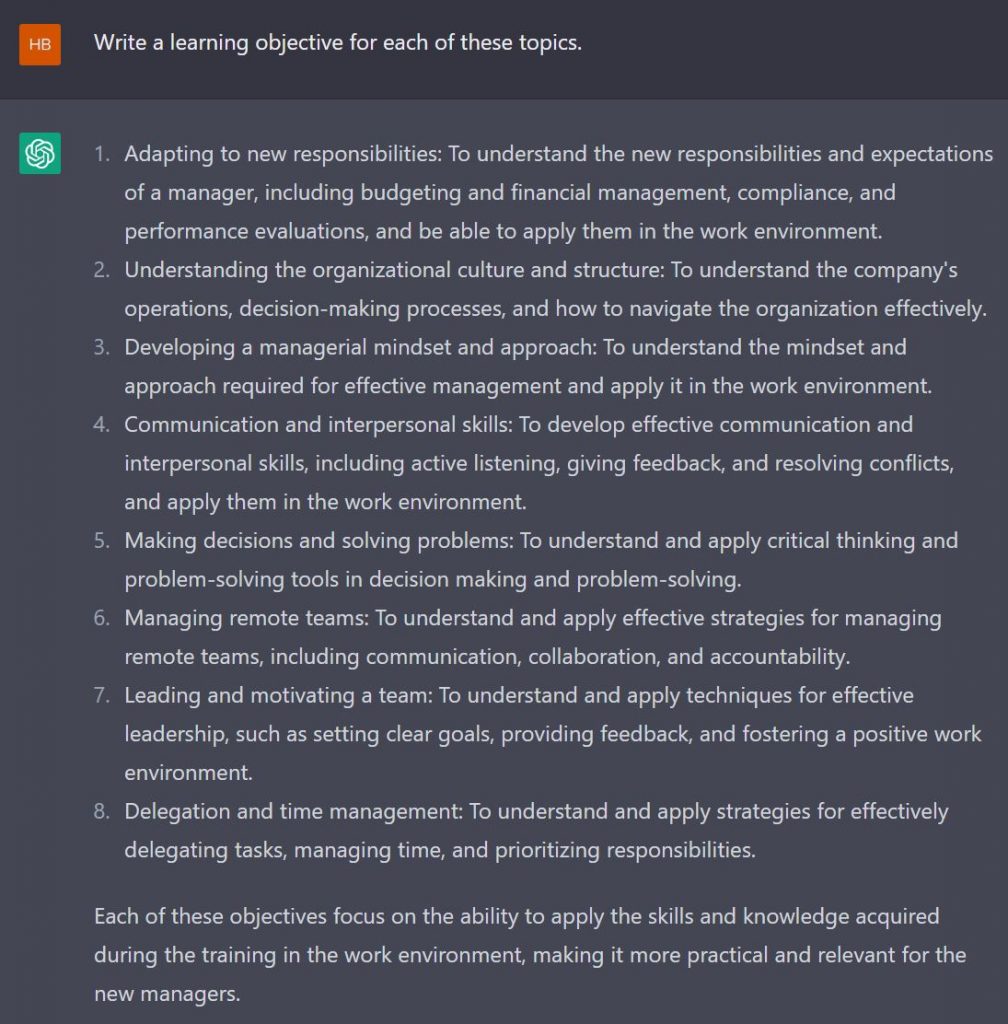
I was disappointed and relieved with the results. I was disappointed because it produced poorly written objectives – many start with “understand”. This is a huge pet peeve of mine! Listen to this video about why. The other part of me is relieved because this is where we can add so much value as learning and development professionals. Use the objectives as a starting point and rewrite them to start with action or observable verbs.
Development
In the Development stage, you create the training materials – handouts, slides, etc. To use ChatCPT in this stage, you need to get more granular. Examples might be to explain how to delegate and motivate and then ask ChatGPT to rewrite your work to simplify it. I asked ChatGPT to write a case study for the Delegation and time management topic.
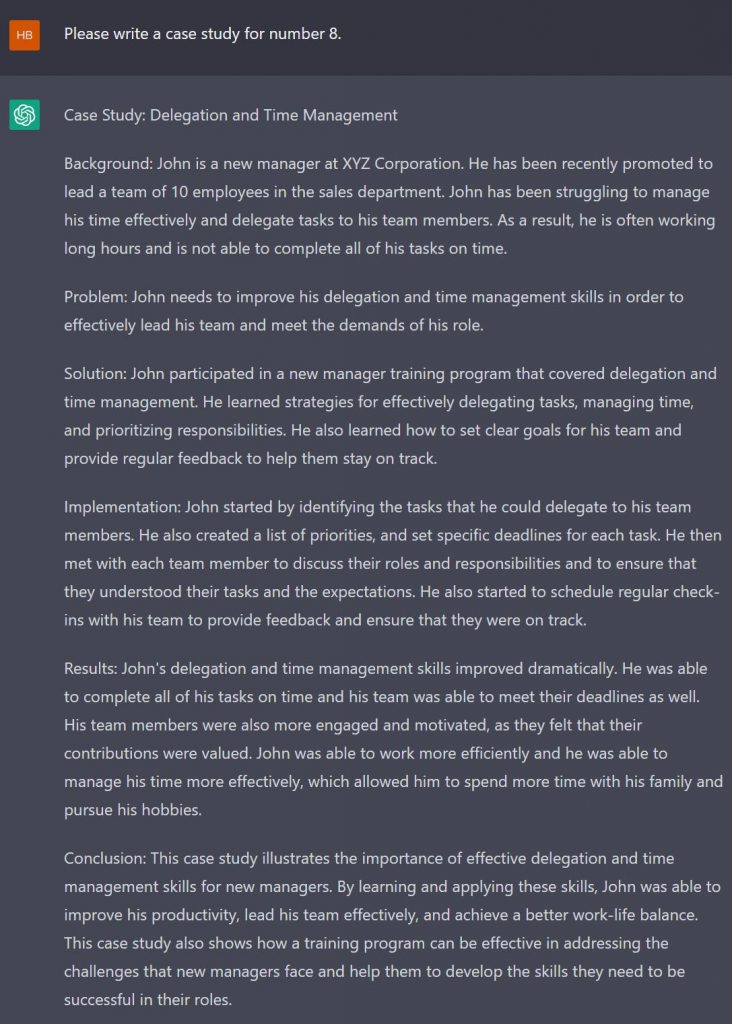
As with earlier examples, I wouldn’t use the response as written, but it provides a good starting point. I could ask the application to tailor it for my industry or use the initial response and rewrite the case to meet my audience’s needs and my learning objectives.
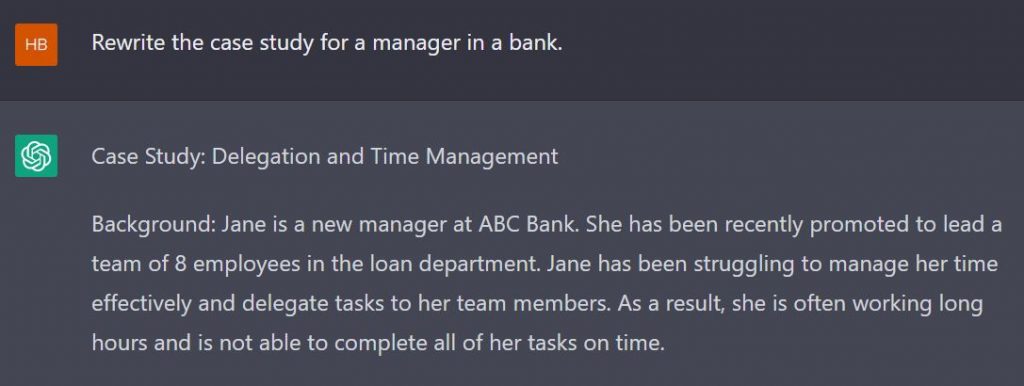
Implement
Implement is different depending on your delivery channel. In my scenario, let’s assume my course is facilitated – either in-person or virtually. I asked ChatGPT to identify engaging activities. Here’s the response.

Each of these activities provides a starting point upon which I could expand. I could ask ChatGPT to elaborate, brainstorm on my own ideas or collaborate with a colleague.
Evaluate
Finally, in the Evaluation phase, you look for the impact your course had on the participants and the organization. Ideally, we evaluate what they learned AND what they’ve been able to apply.
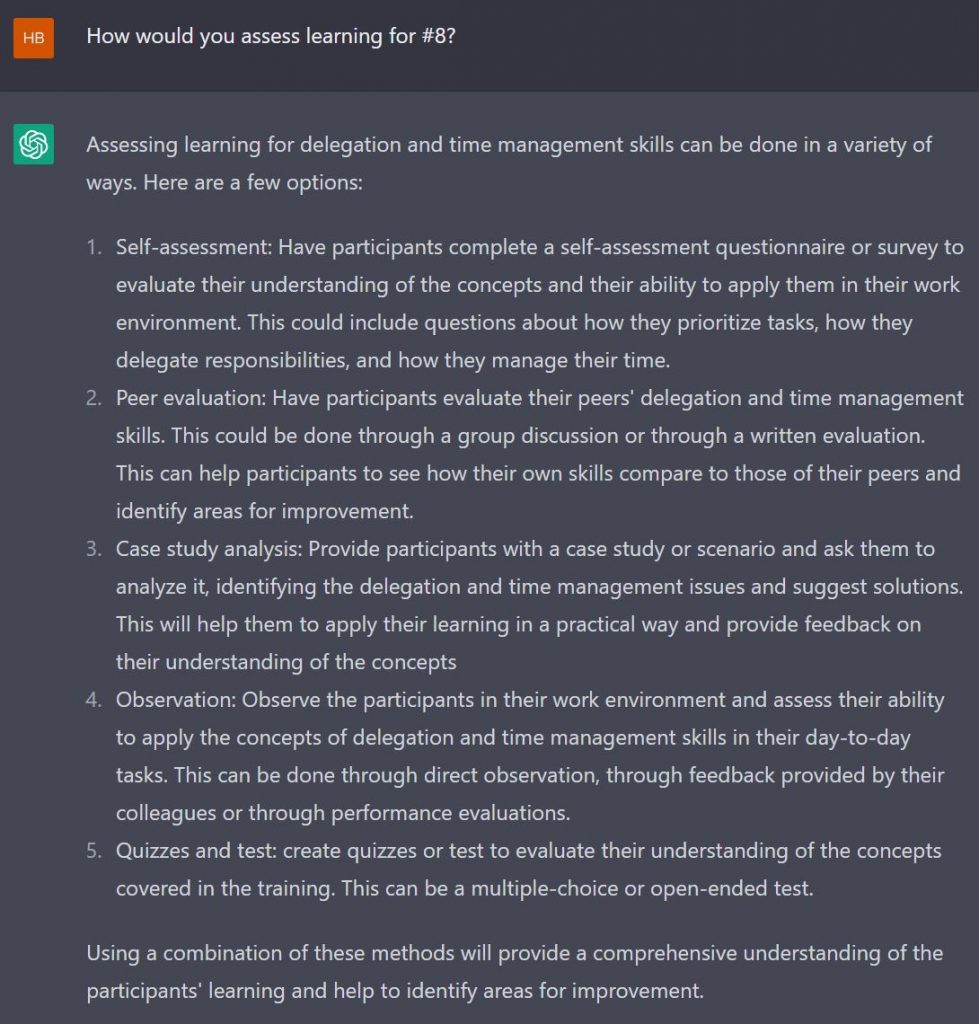
The responses provide general techniques which many learning and development professionals would already know. When asked to provide more detail for #2 Peer evaluation, ChatGPT again responded with general techniques. This is where we can add value – pulling together all the information in our course and using these techniques as a starting point to build a robust evaluation.
I’m in a leadership networking group, and we experimented with ChatGPT over the Christmas holidays. We identified these ways to leverage the application:
- Thought Partner
- Thought Reflector
- Thought Refiner
- Productivity Partner
- Thought Editor
In all of these, we’re not taking ChatGPT’s results and using them as is. We’re using the results to inspire new thinking or refine our thinking. We still have an active role as learning professionals to design training that meets the performance needs and supports the organization’s strategy.
Let me know what you think.
- How have you used ChatGPT?
- If it’s new to you, what is your reaction? Do you see equal parts scary and awesome as I do?
In case you missed it
I’ve shared some additional posts online. Here they are in case you missed them.
- Inconsistent, disjointed training increases employee stress – (video link)
- From Teach to Facilitator- what’s the difference – (video link)
- Curriculum design guidelines – (video link)
- Employees in our training programs – (video link)
- Two sides of a coin – (video link)
- Training vs. Learning – (video link)
Training that Clicks book – I’m writing a book about virtual training. I’ve been posting about the process every Friday on LinkedIn.
Follow this hashtag #bookbyhannah on LinkedIn to learn about my journey. Follow this hashtag #trainingthatclicks to learn about this book specifically.

